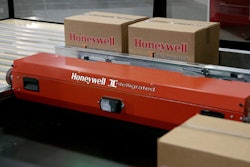
The global supply chain continues to be under heavy pressure, forcing companies to increase spending, as many consumers prefer deliveries and are more dependent than ever on digital business models. Combined with a global workforce shortage, the stress on the supply chain is being caused by more than just a higher demand for products. Because of this, sectors like retail, transportation and logistics are looking to technology to help relieve this pressure.
Whether it be around routing efficiencies or inventory management, plenty of technologies are widely adopted across the supply chain allowing for more efficient operations. However, one class of solutions that needs to be more widely considered is workflow automation. By implementing automation technology across key industries within the supply chain, businesses can solve critical issues they’re currently facing, like labor shortages and outdated processes, as well as better prepare themselves for the increasingly digital future.
Supply chain issues and where automation can help
Since the pandemic began, there’s been a heavier reliance on the supply chain, especially as consumer deliveries continue to rise each day. As many are still uncomfortable shopping at traditional storefronts, the value of convenience is being realized – at the cost of over-extended warehouses and lack of inventory. Additionally, ongoing shipping delays, which create upset customers, hurt a business’ bottom line over time, being a contributing factor to the rising costs coinciding with the stretched supply chain. It’s a no-brainer for organizations to lean on digital technologies to meet demand and support businesses, but this is also the prime opportunity for workflow automation solutions to shine and display true value within this critical sector.
Another main issue within the supply chain right now is a workforce shortage. A lot of industries around the world are feeling this, but issues are far more critical as it relates to the supply chain due to the sense of urgency around moving goods to their destination quickly. To combat this, warehouses and manufacturing facilities can use physical robots to move goods to different areas of the facility with accuracy. While important, this doesn’t do much for the actual workflow of other employees which is where the application of automation solutions gets interesting.
The power of adopting new technology
It’s important to understand what workflow automation is made up of and where it can bring impact on solving common supply chain woes. These solutions use different technologies, like artificial intelligence (AI) or robotic process automation (RPA), to improve workflows across a wide range of business processes. Automation solutions have the ability to transform an hour-long, mundane process into one that takes just minutes to complete. A great example is document processing, which can take hours for administrators to manually sift through and add data into the proper databases. Instead, an employee can apply a workflow solution to this specific process that analyzes documents based on any specific parameter and automatically files it to the correct location. An improvement like this is useful for the supply chain as it can quickly process paperwork related to orders and inventory without disruption. Automation can make the process more efficient and give employees additional time to focus on more critical tasks during their day.
Furthermore, in-depth technologies like AI enables a machine to simulate human behavior, while machine learning (ML) allows it to automatically learn from past data without explicit programming. By integrating AI, manufacturers can lower their overall transportation and labor costs, saving millions each year. With ML, a system can recognize a product being ordered mostly to a certain region, giving decision-makers the information they need to ensure that product is stored nearby and easily accessible for quick deliveries. The options are nearly endless when it comes to incorporating automation technology into a business; it’s a matter of how creative people want to get.
Click here to hear more about new technology in the supply chain:
Future-proof
There’s no debate that all businesses and services will become more digital in the years to come. While many have already made these types of investments in the future, there are still plenty of businesses that aren’t looking at the big picture to understand what they can gain from focusing on digital transformation. Automation is going to continue making positive change in organizations that adopt these solutions, and there’s a few ways solutions will accomplish this objective:
- Efficiency. This may seem obvious, but the way to actually achieve improved levels of efficiency is still up for debate. Workflow automation can be the answer because of how easily solutions can be applied. Simple automation used to limit the time spent on tasks is one way, but even more interesting is the creative application that comes with it. These solutions enable anyone with little to no experience in application development to become no-code developers in their own right. With the right tools in place, they can develop solutions to improve their own processes and have it spread across their organization to create improvements for everyone.
- eSignature. If a business that deals with documents hasn’t adopted an eSignature solution yet, this is the prime opportunity to do so. This technology plays a crucial role in ongoing digital transformation initiatives, makes document processing easier and improves overall customer experience due to the simplicity of the technology. By providing a simplified way to submit important documents, businesses can have the framework to provide a frictionless customer experience and remain competitive with other businesses using similar technology.
- Security. The supply chain, specifically in retail, is one of the most targeted industries by bad actors. One simple human error in user authentication, or unsecure storage of information, can have catastrophic consequences. Automation can assist the way information flows throughout an organization, limiting any negative exposure to security threats and keeping information safe.
The time to future-proof the supply chain is now, and workflow automation will be table stakes in making it a reality. Automation solutions can help businesses increase revenue, reduce time spent on tedious tasks, and unlock new levels of creativity for employees, among a laundry list of other benefits. By re-thinking how to work with the unpredictable nature of the supply chain, businesses can lean in on their automation and digital transformation efforts and be ready to deal with future obstacles.

















![Pros To Know 2026 [color]](https://img.sdcexec.com/mindful/acbm/workspaces/default/uploads/2025/08/prostoknow-2026-color.mduFvhpgMk.png?ar=16%3A9&auto=format%2Ccompress&bg=fff&fill-color=fff&fit=fill&h=135&q=70&w=240)

